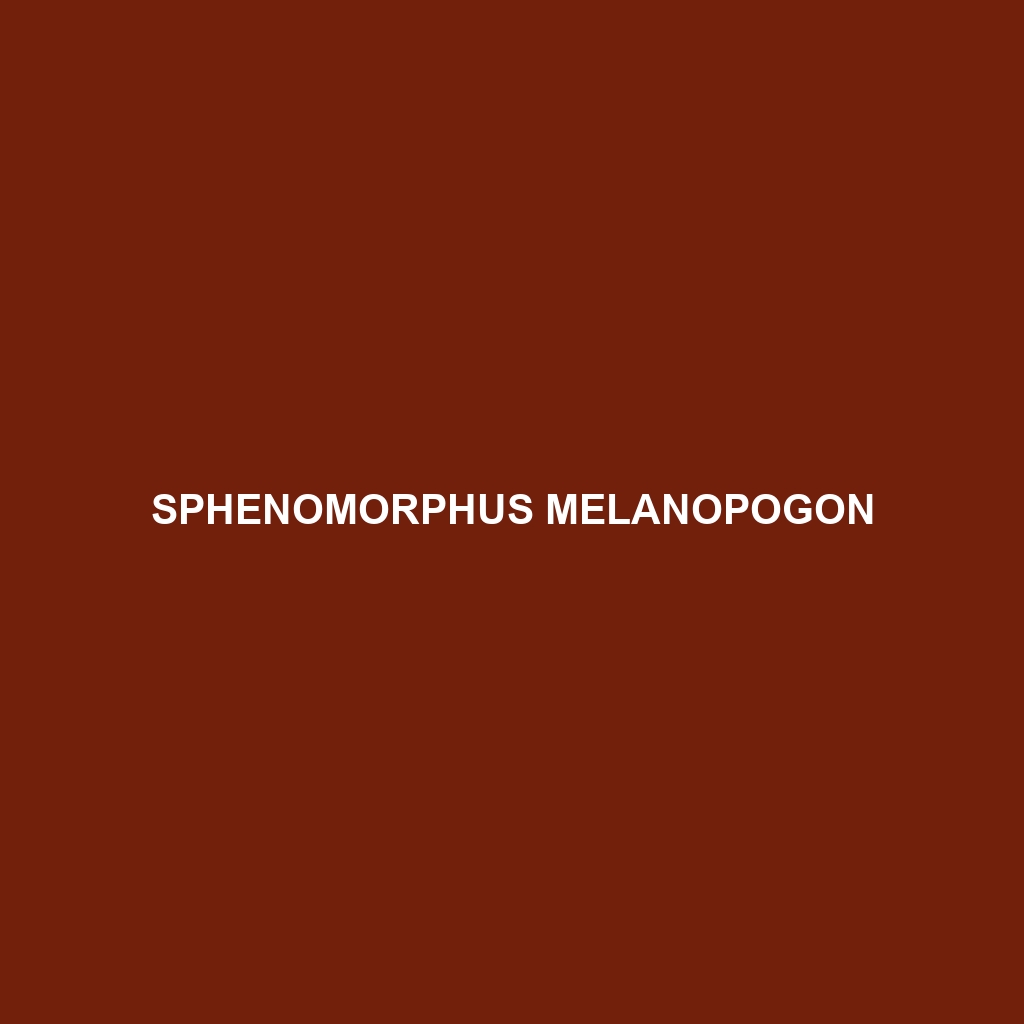<p><b>Sphenomorphus schlegeli</b>, commonly known as Schlegel's skink, is a vibrant insectivorous reptile native to the humid tropical forests of Southeast Asia. With distinctive smooth scales and an agile nature, this skink plays a vital role in its ecosystem by regulating insect populations and serving as prey for larger animals.</p> </div>
Tag: Biodiversity in Southeast Asia
Sphenomorphus sarasinorum
<b>Sphenomorphus sarasinorum</b> is a vibrant, insectivorous lizard native to the humid tropical rainforests of Southeast Asia, particularly in Indonesia and Malaysia. With its distinct coloration, elongated body, and nocturnal behavior, this species plays a vital role in maintaining ecological balance by preying on various invertebrates while also serving as prey for larger predators.
Sphenomorphus melanopogon
<b>Sphenomorphus melanopogon</b>, known as the Black-bearded sphenomorphus, inhabits the humid tropical forests of Southeast Asia, thriving in rainforests and savannas. This slender, agile reptile exhibits cryptic coloration and robust climbing abilities, primarily feeding on insects while playing a vital role in maintaining ecosystem balance.
Sphenomorphus maindroni
<b>Sphenomorphus maindroni</b>, commonly known as Maindron's skink, is a medium-sized, diurnal insectivore found in the tropical rainforests of Southeast Asia, characterized by its smooth, shiny scales and distinctive bright blue tongue. This skink plays a crucial role in controlling insect populations and serves as an important prey species in its ecosystem.
Sphenomorphus longicaudatus
<b>Sphenomorphus longicaudatus</b>, commonly known as the long-tailed skink, is a diurnal insectivore found in humid, well-vegetated habitats across Southeast Asia. Recognizable by its elongated body and tail, this species exhibits remarkable agility and camouflage, playing a vital role in pest control and as a prey species within its ecosystem.
Sphenomorphus latifasciatus
<b>Sphenomorphus latifasciatus</b>, commonly known as the broad-banded skink, is a vibrant insectivorous species native to Southeast Asia's tropical rainforests, recognized for its sleek body, striking coloration, and agile movements. Measuring 10 to 15 cm in length, this skink plays a crucial ecological role by regulating insect populations and serving as prey for various predators.
Sphenomorphus helenae
<p><b>Sphenomorphus helenae</b>, commonly known as Helena's skink, is a diurnal omnivore found in the humid lowland rainforests of Southeast Asia. With an elongated, streamlined body measuring 20-25 cm, it exhibits stunning dark brown to greenish hues with lighter stripes, playing a crucial role in regulating insect populations within its ecosystem.</p>
Sphenomorphus darlingtoni
<p><b>Sphenomorphus darlingtoni</b>, known as Darlington's skink, is a vulnerable insectivorous species native to the humid rainforests of Southeast Asia, particularly in Indonesia and the Philippines. Measuring 15 to 25 cm, this slender skink exhibits earthy brown to deep green coloration, thriving in its ecosystem by controlling insect populations and contributing to food webs.</p>
Sphenomorphus cranei
Discover the vibrant <b>Sphenomorphus cranei</b>, a striking lizard native to the rainforests of Southeast Asia. Known for its unique coloration, agile behavior, and vital role in regulating insect populations, this species thrives in humid environments and is a fascinating example of rainforest biodiversity.
Sphenomorphus courcyanus
<p><b>Sphenomorphus courcyanus</b>, a medium-sized skink measuring 10 to 15 cm, is predominantly found in the humid rainforests of Southeast Asia. Notable for its vibrant green coloration and diurnal behavior, it plays a vital role in the ecosystem as an insectivore, regulating insect populations while also displaying intriguing social interactions during mating season.</p>









